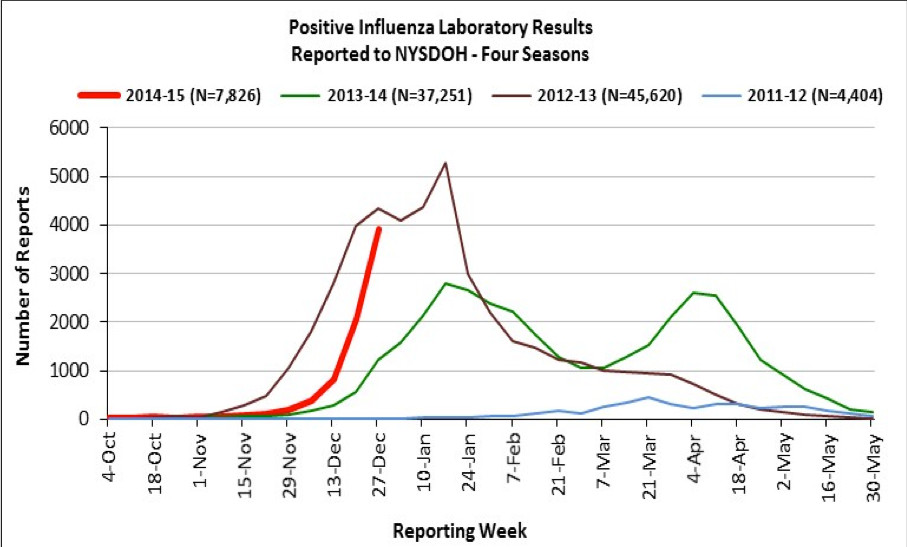Prime time for the flu
Experts say county is in midst of ‘severe’ viral season
Those who have been experiencing a cough, runny nose or high fever in recent weeks certainly are not alone, as Nassau County is currently in the thick of a severe flu season, according to Dr. Janice Verley, the director of infectious diseases at the Nassau University Medical Center in East Meadow.
While the flu season typically begins in October and can linger as long as May, Verley said, December and January are when the season usually peaks — 2014-15 being no exception. She estimated that since the beginning of October, the hospital has seen about double the number of patients with flu-like symptoms that it did in the same period last year, including a “significant” spike in recent weeks.
One explanation is the higher virulence of the most common strain this season, the H3 strain, Verley said, adding that it has also “drifted” in its makeup from what researchers expected when they created this season’s vaccine.
Verley still strongly recommended getting the vaccination, which offers some protection against the H3 strain, as well as different but related viruses.
Influenza is a contagious respiratory illness that infects the nose, throat and lungs. Symptoms include sore throat, body aches, chills, fatigue, nausea, vomiting and diarrhea, the latter most common in children. Those most vulnerable to it are the very young and very old — children 2 and under and seniors 65 and older, as well as those with existing respiratory problems like emphysema, bronchitis or asthma.
According to the U.S. Centers for Disease Control and Prevention, there have been 21 reported deaths caused by the flu since Sept. 28. In New York, there has been one, according to the state Department of Health.
Nassau’s recent spike follows a statewide trend. In the state DOH’s most recent weekly report, ending Dec. 27, there were 2,922 laboratory-confirmed influenza reports, a 90 percent increase over the previous week. The number of patients admitted to hospitals with laboratory confirmed influenza saw a 139 percent increase from the week before.

 47.0°,
Mostly Cloudy
47.0°,
Mostly Cloudy 




